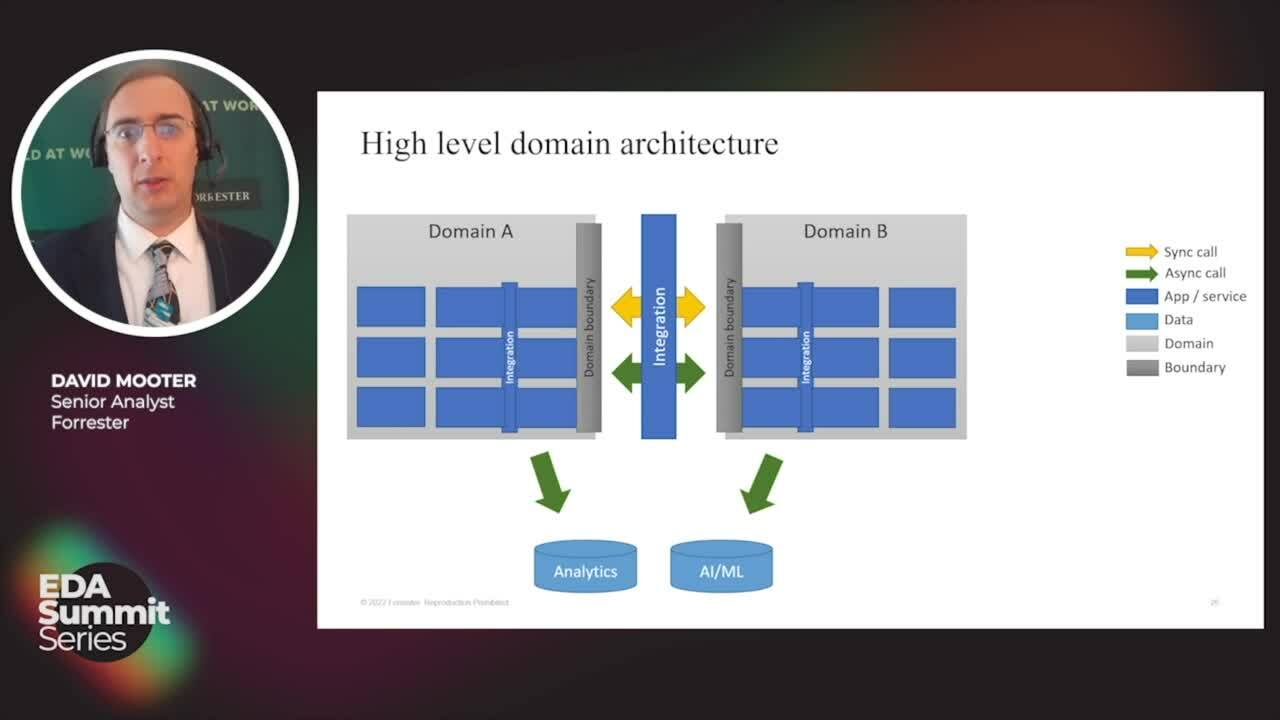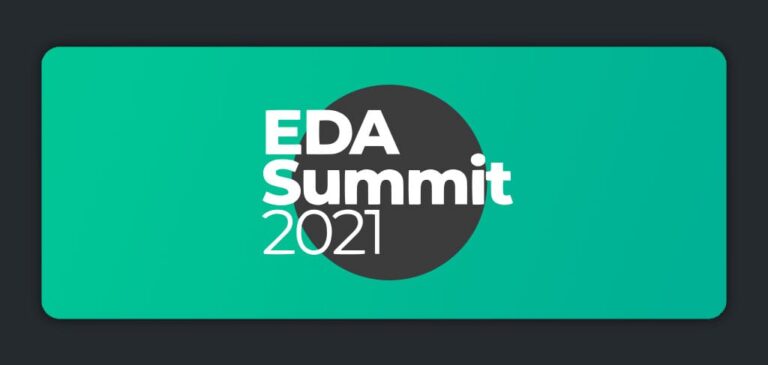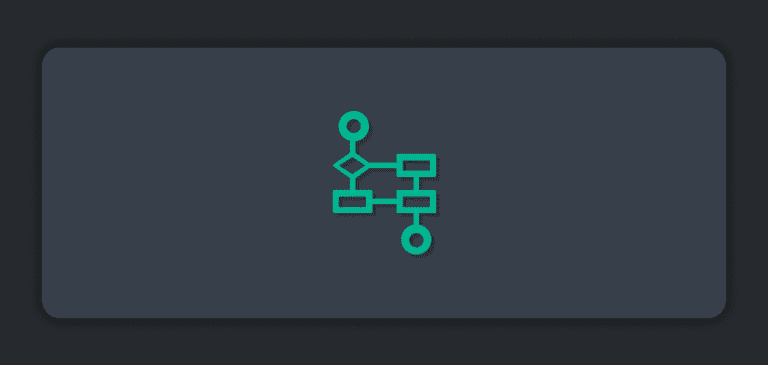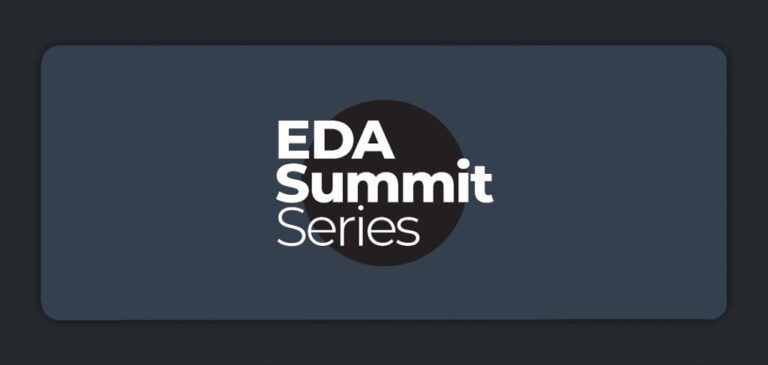Yesterday EDA Summit kicked off a series of free educational webinars called “EDA Summit Series” with a webinar called “Best Practices for Event Enabling your Enterprise Integration Platform” featuring David Mooter, Senior Analyst at Forrester Research, and Chris Aaron, VP Go-To-Market at SAP.
With this post I’ll summarize what they covered, and you can watch the 1-hour webinar in its entirety here:

The Impact of EDA on Integration
Mooter opened the session by explaining the role event-driven architecture plays in four kinds of integration:
- Application Integration – There are many ways to tackle application integration such as API management, iPaaS, and Service Mesh; event-driven architecture can complement all of them by enabling the real-time distribution of data to many recipients, and decoupling applications, business domains and microservices.
- Data Integration – Similarly there are a myriad of ways to achieve data integration, and EDA can help with data replication and real-time analytics. For example, you can pair an event broker with your iPaaS to achieve real-time ELT (Extract, Load, Transform).
- B2B Integration – For many years companies have exchanged information via managed file transfers and partner management tools, but more recently they’ve been turning to iPaaS and API management tools. Forrester sees EDA playing a supporting role here, particularly when there is an increased need for real-time data. Forrester has started to see a growing interest in B2B organizations receiving event-based notifications from their partners.
- Process Automation – Once again, a plethora of tools exist for this category, such as digital process automation tools, AI/ML assisted integration and robotic process automation (RPA). Again, Forrester sees EDA playing a supporting role in process automation, particularly as building blocks that citizen developers can tap into alongside traditional REST APIs.
Approaches and Advantages of Event Enabling your Integration Infrastructure
Mooter then explained how to tackle event-enabling your integrations and stressed the agility that event-driven architecture offers as part of your integration foundation, such as:
- How EDA facilitates resilient microservices
- How EDA + iPaaS create simpler, reusable, autonomous and real-time ELT
- How EDA facilitates the decoupling of business domains
- How event choreography promotes agility vs traditional integration orchestration.
The SAP Perspective
Chris Aaron of SAP then introduced some useful resources that he’s seen SAP and non-SAP shops use to get started on the road to event-driven integration. SAP’s Integration Solution Advisory Methodology (ISA-M), for example, has been used by over 1,000 organizations around the world to assess their integration landscape and identify solutions to their various use cases. He then highlighted two customers who successfully used event-driven integration to meet and exceed their objectives.
- Natura –This global personal care and cosmetics company, which owns multiple brands including The Body Shop and Avon, needed to implement a sophisticated multi-channel system to meet the needs of their 100M customers and 1.8M sales consultants. Natura used SAP and event-driven approaches to integrate all their applications and data with one entry point. They were able to increase automation, business insights and meet customer demand more quickly with real-time data analysis resulting in 7.8% revenue growth on a 22% increase in volume.
- ElkJop – This Nordic consumer electronics retailer needed to integrate a dozen legacy systems as part of implementing a next-generation consumer experience that supports mobility, unified channels and a seamless customer journey. They used SAP’s integration Suite and event-driven patterns to successfully integrate 500 interfaces generating 5 million messages per day and 50 million API calls per month.
What Attendees Said: Poll Results
Polling questions during the webinar revealed that application integration (92%) and data integration (77%) were the two leading integration use cases considered for event-enabling with EDA. B2B integration (50%), followed by process automation (37%) rounded out the results of consideration for EDA.
Respondents also noted their prime motivation for considering event-driven architecture for their integration needs were: better agility or responsiveness to change (35%), followed by real-time connectivity (29%), connecting legacy/on-prem and cloud-based systems (22%) and better scalability (14%).
(Speaking of what people think about EDA, Solace recently commissioned an independent research firm survey 840 architects, developers and executives about EDA. Take a sneak peek at the results here or download the eBook for more details.)
Coming Up Next…
This was the first in a series of EDA Summit Series webinars. The next webinar, “Data Mesh meets Event Mesh,” is scheduled for February 28. If that sounds interesting, you can learn more & register here.
Explore other posts from categories: For Architects | For Developers

 Roger Sabourin
Roger Sabourin





